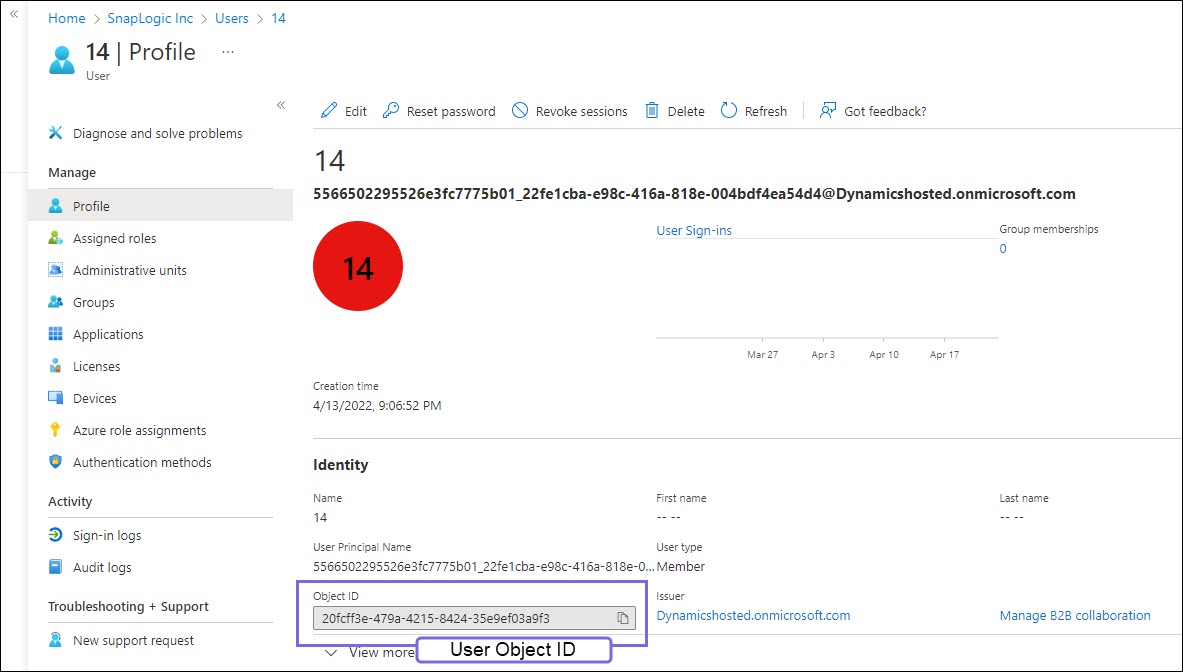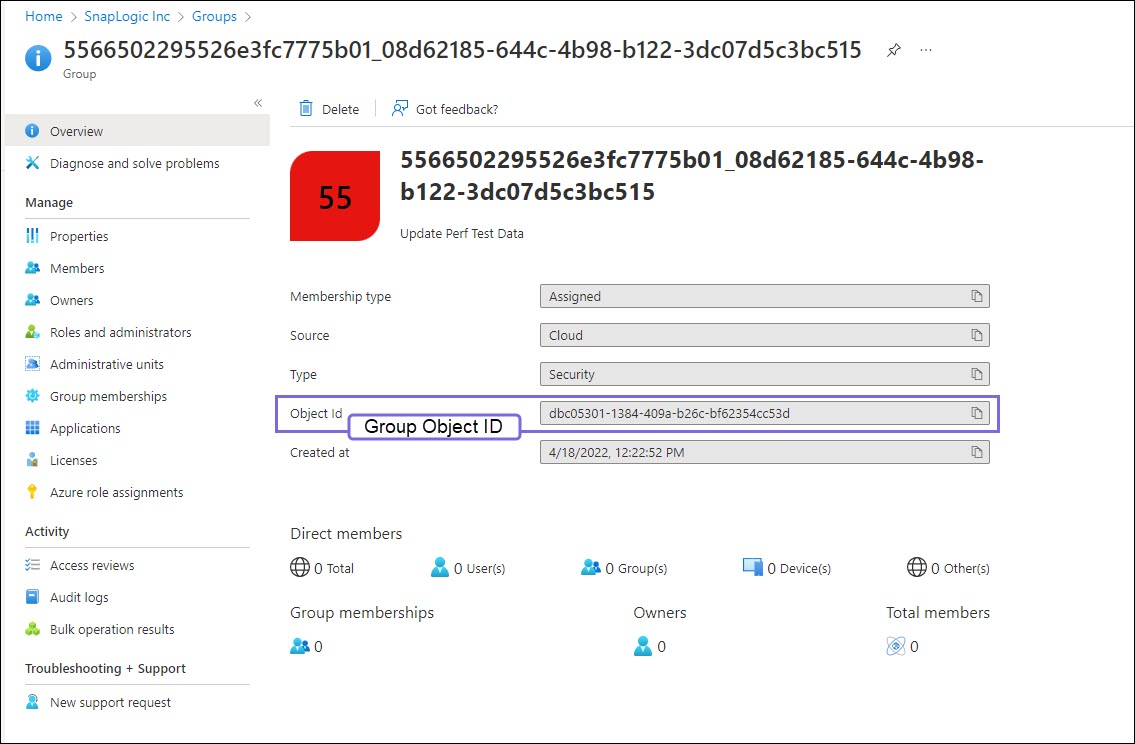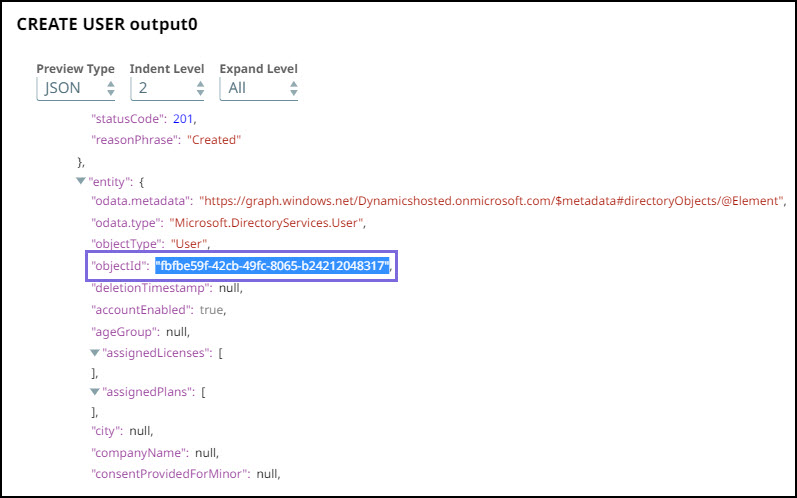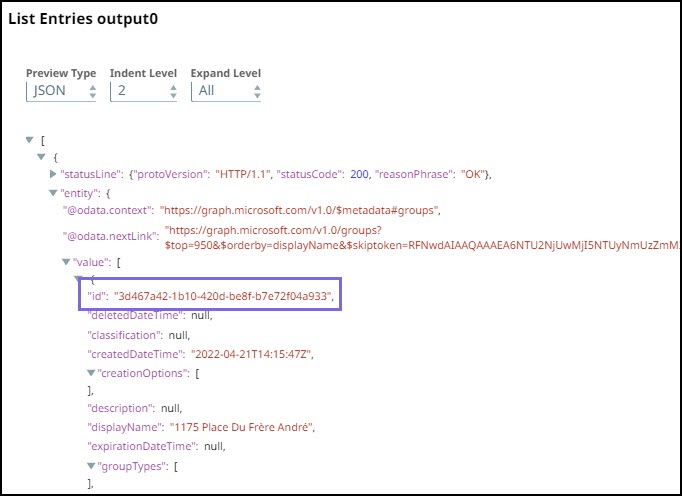In this article
Overview
You can use this Snap to delete an existing entry (User/Group) from the given Azure Active Directory instance.
Snap Type
Delete Entry Snap is a WRITE-type Snap.
Prerequisites
A valid Azure AD OAuth2 account.
Support for Ultra Pipelines
Works in Ultra Pipelines. However, we recommend that you not use this Snap in an Ultra Pipeline.
Limitations and Known Issues
None.
Snap Views
Type | Format | Number of Views | Examples of Upstream and Downstream Snaps | Description |
|---|---|---|---|---|
Input | Document Binary Binary or Document |
| File Reader followed by any file Parser followed by a Structure Snap. | Set of existing entries. |
Output | Document Binary Binary or Document |
| Any file Formatter followed by File Writer. | HTTP Code 204. |
Error | Error handling is a generic way to handle errors without losing data or failing the Snap execution. You can handle the errors that the Snap might encounter while running the Pipeline by choosing one of the following options from the When errors occur list under the Views tab. The available options are:
Learn more about Error handling in Pipelines. | |||
Snap Settings
Asterisk (*): Indicates a mandatory field.
Suggestion icon (
 ): Indicates a list that is dynamically populated based on the configuration.
): Indicates a list that is dynamically populated based on the configuration.Expression icon (
 ): Indicates whether the value is an expression (if enabled) or a static value (if disabled). Learn more about Using Expressions in SnapLogic.
): Indicates whether the value is an expression (if enabled) or a static value (if disabled). Learn more about Using Expressions in SnapLogic.Add icon (
 ): Indicates that you can add fields in the field set.
): Indicates that you can add fields in the field set.Remove icon (
 ): Indicates that you can remove fields from the field set.
): Indicates that you can remove fields from the field set.
Field Name | Field Type | Description | |
|---|---|---|---|
Label* Default Value: Delete Entry | String | Specify the name for the Snap. You can modify this to be more specific, especially if you have more than one of the same Snap in your pipeline. | |
Entity type Default value: User | Dropdown list | Specify the kind of object to delete. Options available are User or Group. | |
Object ID* Default value: [None] | String/Expression | Specify the ID of the object to be deleted. | |
Snap Execution Default Value: Execute only | Dropdown list | Select one of the three modes in which the Snap executes. Available options are:
| |
Obtaining User object ID/Role object ID/Group object ID from Azure Portal
Log in to the Azure portal.
Navigate to Azure Active Directory>Users/Groups.
Select a specific User/Group.
In the Profile, you can view the Object Id.
Copy the Object ID and use it to configure the relevant Snap as required.
Many features in Microsoft Graph API work similarly to the Azure Active Directory Graph APIs. However, a few have been changed or improved. For instance, there is a variation of the entity names in the output preview. This table depicts the difference in the output:
Old output (Azure AD Graph API) | New Output (Microsoft Graph API) |
|---|---|
The entity object Id property was displayed as “ Learn more about the properties in Azure AD Graph API: | The object Id property is displayed as “ The output also contains the default parameters shown by the Microsoft Graph API. However, there are certain attributes such as Learn more about the properties in Microsoft Graph API:
|




